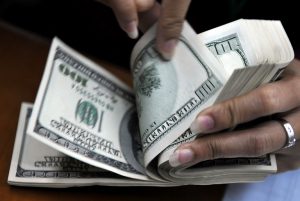How to derive valuation of your company or startup after detailed analysis and projections? How do investors determine which stock to put their money on?
When it comes to determining the absolute value of a company, discounted cash flow (DCF) gives you the answer. In simple terms, DCF tries to work out the present-day value of a company, based on future projections of cash available to the investors.

The word ‘discounted’ arises from the concept of ‘time value of money’. If the value thus arrived at, is higher than the current value of cash invested, then it is considered to be a good investment opportunity. Some of the terms used in DCF analysis are as follows.
- Free cash flow (FCF) Cash generated by both tangible and intangible assets of the firm that is available to investors. It is calculated as operating cash flow minus expenditure.
- Terminal value (TV) This is the value of cash at the end of the forecast period.
- Discount Rate The interest rate used to determine the present value of future cash flows by taking into account the time value of money and the risk involved. Greater the uncertainty and risk, higher the discount rate.
How DCF works The method involves projecting cash flows (FCF) over a certain period, calculating the terminal value (TV) at the end of that period, and then discounting the cash flows and the TV using an appropriate interest rate. The value thus obtained is called the Net Present Value (NPV) of the company.
The formula This can be better understood with the help of an example. Let us calculate the worth of a Company A using DCF analysis. Firstly, we would assess the company’s future cash flow growth. Let us assume that the company’s 12-month FCF is Rs 50 million.
Some other factors to be considered here include the company’s previous year FCF, growth, and factors for growth to assess sustainability.
The company is assumed to grow at 10% per annum in the first 5 years. For calculating the TV, let us assume the long-term growth rate to be 5% and the calculated Weighted Average Cost of Capital (WACC) or discount rate to be 8% (actual calculation is not done here).
The terminal value is calculated as below.
Terminal value = projected cash flow for final year (1+ long-term growth rate)/ (discount rate- long-term growth rate)
Year 1 = 50*1.10 55
Year 2 = 55*1.10 60.5
Year 3 = 60.5*1.10 66.55
Year 4 = 66.55*1.10 73.20
Year 5 = 73.20*1.10 80.52
Terminal value = 80.52 (1.05) / (0.08-0.05) = 2818.20
Now, the DCF of Company A can be calculated by adding each projected cash flow after adjusting it using WACC, as shown below.
DCF (Company A) = (55 / 1.08^1) + (60.5 / 1.08^2) + (66.55 / 1.08^3) + (73.20 / 1.08^4) +(80.52 / 1.08^5) + (2818.20 /1.08^5)= 2182.22
Thus, Rs 2.18 billion is our estimate of Company A’s total market value. In order to compare the company’s share value in the market, we need to subtract the net debt and divide the result by the number of shares outstanding.
For example, if the company has 10 million shares, the value of fair equity per share will be Rs 218.22. If this value is higher than the actual current stock price of the company, then we can say that Company A is a good investment.
In addition to being cumbersome and complex, a major disadvantage of this method of analysis is that the accuracy of values varies greatly based on the assumptions made, and the values are often expressed as a range.
Any small changes in inputs can lead to widely fluctuating results. However, the main advantage of DCF analysis lies in the fact that it is the closest to intrinsic stock value. It is also a futuristic and fundamental method of evaluation.
VenturEasy can derive valuation of your company after detailed analysis and projections. Get in touch with us at hello@ventureasy.com
- Subsidiary Registration in India: Navigating the Legal Landscape - December 8, 2024
- Incorporation of Foreign Subsidiary in India - November 30, 2024
- Compliances for Subsidiary Companies In India - November 23, 2024
